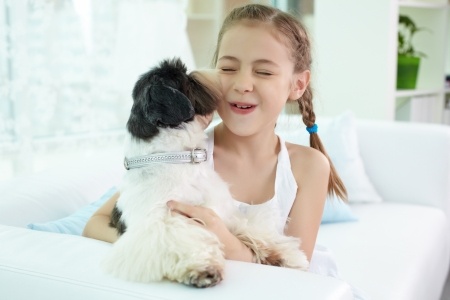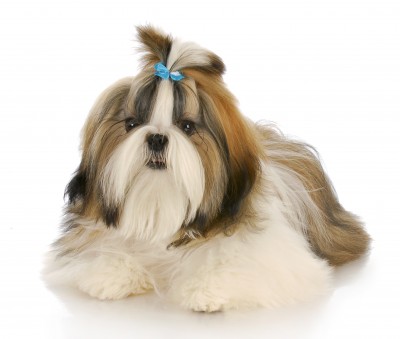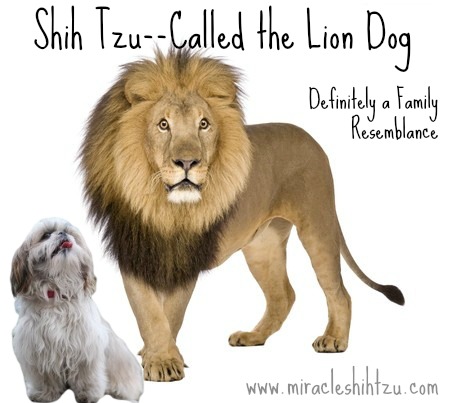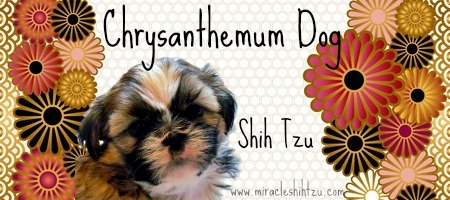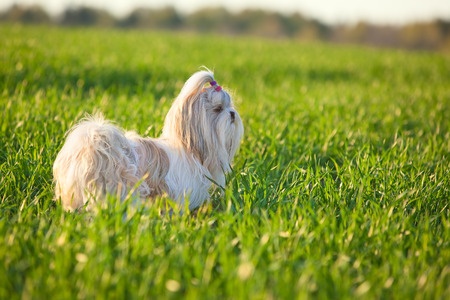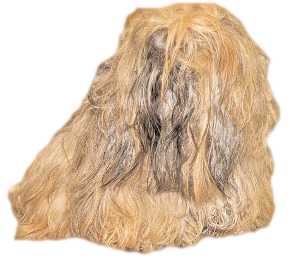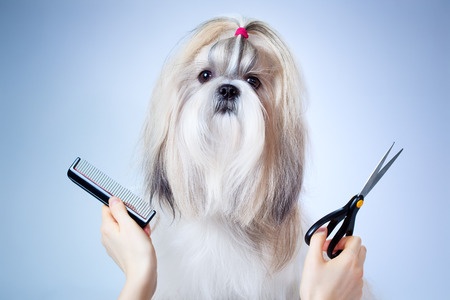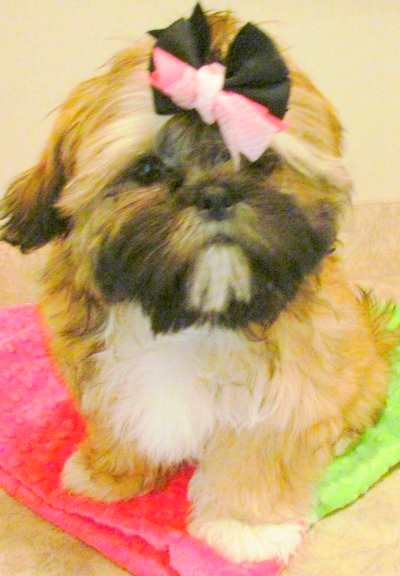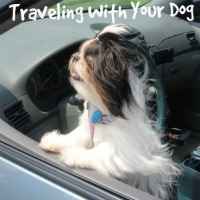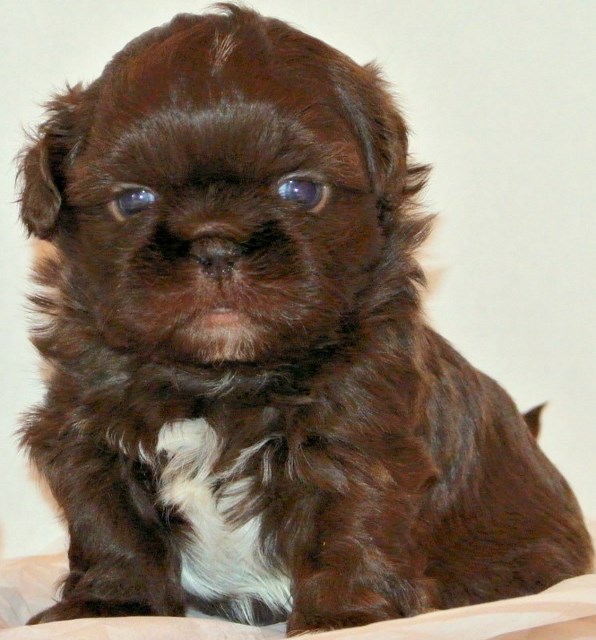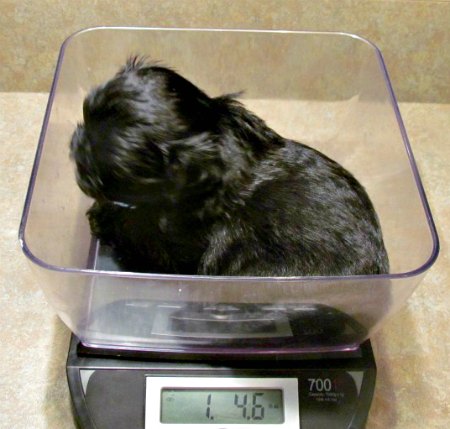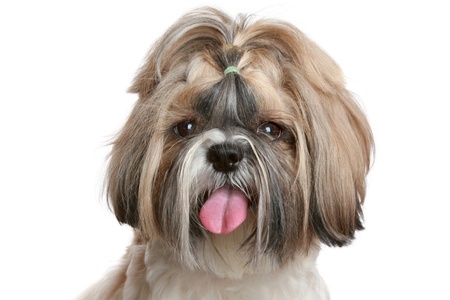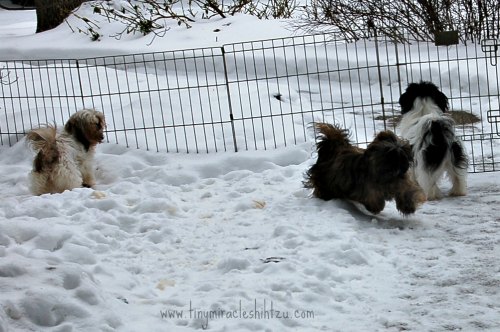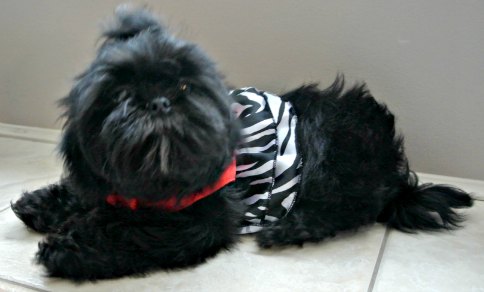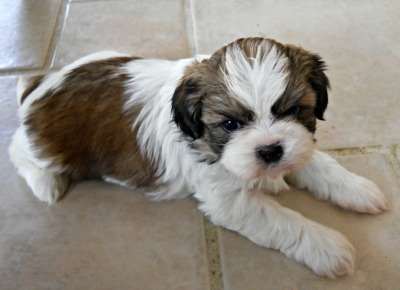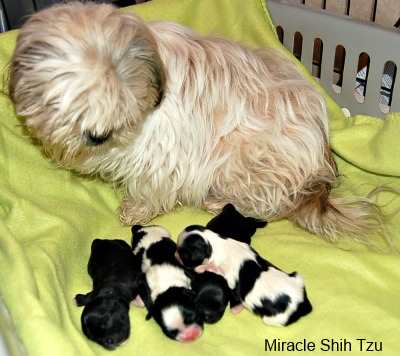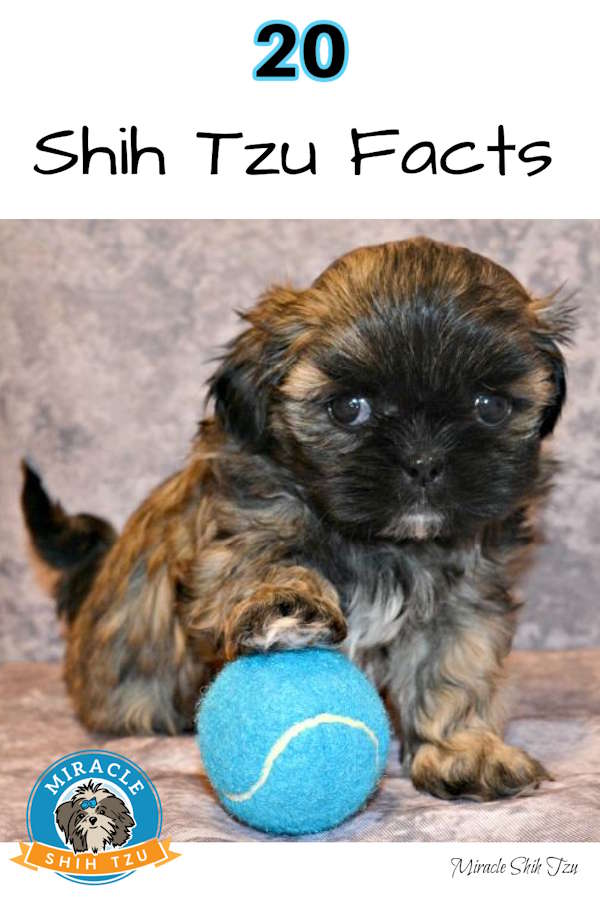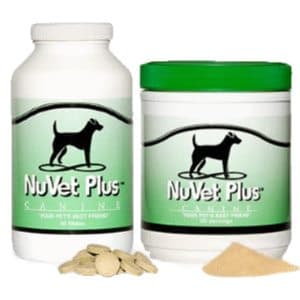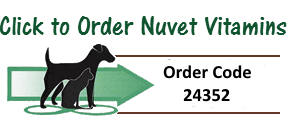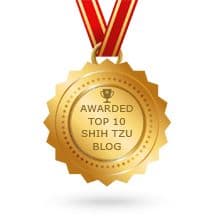- Home
- About the Shih Tzu
- 20 Shih Tzu Facts
20 Shih Tzu Facts You May Not Know
Check out these 20 Shih Tzu Facts to test your knowledge about the breed, its history, grooming needs, health care, and temperament.
If you've ever lived with a Shih Tzu dog, you are probably an expert and these "facts" are not new to you. If, on the other hand, you are considering adding a dog to your household and are contemplating a Shih Tzu, you will find that this information may help you understand the breed and equip you with the knowledge to make an informed decision on whether the Shih Tzu is the right breed for you.
We here at Miracle Shih Tzu love this breed, but we also know that the breed may not be right for everyone. So, here are the facts, and just the facts.
Twenty Shih Tzu Facts
1. Shih Tzu: A Companion Dog
Shih Tzu were bred for centuries to be a companion dog. They can't hunt, can't guard, can't protect farm animals, can't flush out vermin. They can just be your friend!
Read more about the Shih Tzu Temperament
Read, 7 Common Misconceptions About Owning a Shih Tzu
2. An Ancient Breed
According to DNA research, they are one of the world’s 14 most ancient breeds according to making them very close to the wolf.
3. Shih Tzu: The Lion Dog
They were called a lion dog, but they aren’t the only breed with that nickname: Lhasa Apso, Pugs, and Japanese Chin were also bred to look like little lions.
Read about the Shih Tzu Breed Standard
4. Chrysanthemum Dog
Another nickname for the Shih Tzu is the Chrysanthemum faced dog. They were called that because when their hair around their face and head grow out as a puppy, it grows in all directions resembling the flower.
5. Pronounced "Sheed zoo"
There is some confusion about how to pronounce the name Shih Tzu. Pronounced "Sheed zoo" it means lion in Chinese. In case you don't know, both the singular and plural of the word is Shih Tzu. (Not Shih Tzus)
Find out if the Shih Tzu is Right For You
6. Protector of Palaces and Temples
From ancient times, the main job of the breed was to guard palaces and monasteries in ancient china and of course, keep everyone happy. They served as foot warms, hand warmers, lap warmers and bed companions.
7. Modern Shih Tzu Descendents
Of all the Shih Tzu facts, this one is least known: The breed was almost completely destroyed by the Communist Party in China after the Revolution in 1949. All surviving Shih Tzu today descended from 14 dogs, one of which was a Pekingese. What a Pekingese! This was not a popular decision but one made by a lone breeder. While the history of this breed is shroud in mystery, it does make for an interesting read.
8. Double Coated Breed
The Shih Tzu has a thick double coat that consists of a harder outer coat and soft inner coat. Puppies are born with a single coat and their adult coat begins to grow after about 7 months. Not all Shih Tzu coats are the same, though. Some are straighter, some have some waves, but none should be curly. Also worth noting is that some have very cottony, soft coats that mat easily, and others have outer coats that are thicker and straighter. There are even some Shih Tzu that only have a single coat. These are known as Prapso. Of course, Shih Tzu dogs are not the only breed with a double coat. Each type of coat presents it's own challenges when it comes to grooming.
Read More About Grooming Your Shih Tzu
9. Shih Tzu Grooming
Shih Tzu dogs need much brushing and grooming to keep their coats looking good. Daily brushing is ideal, but coats that go more than a few days without grooming begin to mat. Most Shih Tzu owners opt for professional grooms that make daily maintenance much easier. Some though, enjoy the challenge of keeping their Tzu in a long show coat. What's your preference?
Read More about Brushing your Shih Tzu
10. Hypoallergenic Breed
They do not shed onto furniture and floors, so may be appropriate for someone with allergies, but beware of claims of hypoallergenic breeds. They do shed, though, and the loose hair remains in the coat and if not brushed will turn into mats. If you have ever combed your own hair and found hairs caught in the comb, this is the way the Shih Tzu works. With that said, their coat consists of hair not fur.
There is no such thing as a truly hypoallergenic dog breed.
What is a hypoallergenic Dog Breed?
11. Shih Tzu Temperament
Shih Tzu dogs love to play, cuddle, snuggle or just be by your side. These are not the type of dog to leave outside or away from human companionship. They need your love daily to survive. A well tempered Shih Tzu will be your loyal companion for as long as they live. They were bred for centuries to love their people and that is what they do best.
Read more about Shih Tzu Temperament
12. Travel Partner
They are alert, friendly, playful, inquisitive and devoted to their owners. They make great little traveling companions. Due to their small size, it is easy to travel with them, whether on a road trip, a camping trip or flying with your dog.
Read More about Traveling with Your Dog
13. Smart but Stubborn
The Shih Tzu breed is a very smart breed, but can be stubborn, so gentle training methods work best. Socialization and training should begin the minute you bring your puppy home. Training a puppy from day one will help when he or she enters adolescence, a time when they try to break all the rules.
14. Shih Tzu Breed Standard
The breed standard states that the normal Shih Tzu dog should weigh between 9 and 16 pounds. The standard also spells out exactly what a well-bred Shih Tzu should look like and how they should behave. Even if you have no intentions of showing your dog, it's not a bad idea to check out the standard.
Read More about the Shih Tzu Standard
Read More about Puppy Weight Charts
15. A Coat of Many Colors
They come in a wide assortment of colors, solids, two colors and three colors. The American Kennel Club says all colors are acceptable, but everyone has a personal preference. Do you know what color you like best? Do you know what color options you have? It's fun to see what varieties these dogs come in, but please don't get caught up in colors especially puppy colors. Did you know that many puppies will look vastly different by the time they turn one-year-old?
Read More about Shih Tzu Colors
Read More About Shih Tzu Color Changes
16. Cool Climate Dogs
Shih Tzu do best in cooler climates; They do not do well in hot climates are are prone to heat stroke. Shih Tzu dogs love snow and could play for hours in it if you let them. It doesn't mean that if you live in a warm climate, you should not own a Shih Tzu. It just means that you may want to take some precautions.
Read more about Heat Stroke in Shih Tzu Dogs
Read about Cold Weather Advice
17. Brachycephalic Breed
They are considered a Brachycephalic breed: This means they are prone to breathing problems. Some Shih Tzu dogs snore. Some dogs have other respiratory problems that are associated with the brachycephalic syndrome.
Read more about Brachycephalic Breeds
18. Long Life
Their Life span is between 10 to 18 years and many do well into their senior years.
Read more about the Health of the Shih Tzu
19. Litter Size: 2 to 6 Puppies
They usually have litters that consist of between 2 and 6 puppies. Average litter size is 4 puppies.
Read more about Puppy Development
20. Therapy Dogs
Shih Tzu make wonderful emotional support animals and many choose this breed for that very reason. They are also a great choice if you are considering training your dog to do therapy work. They are gentle, friendly and take to strangers with ease. Not sure what the difference is between an emotional support dog and a therapy dog? Learn what the differences are between the various assistance dogs.
Shih Tzu Facts Conclusion
The Shih Tzu breed us ancient and was developed to be a companion. Originally from Tibet, China was instrumental in developing the breed and giving them the name, Shih Tzu. Loving, loyal, and totally devoted are ways to describe the breed and are often the reasons people give for loving these dogs. But, they also require a lot of grooming and they are not the easiest breed to train. Their brachycephalic status means that they may have health problems and do suffer from other health issues. If you are looking for a close companion that will follow you whether you go, this is the breed for you.
Shih Tzu Facts: Pin Now for Future Reference
"Hi, I'm Janice Jones, a former veterinary technician and Shih Tzu expert with over 40 years of experience with the breed. Through Miracle Shih Tzu, I combine my medical background and extensive breed knowledge to provide reliable, practical advice for Shih Tzu owners. My mission is to help you give your Shih Tzu the happiest, healthiest life possible through evidence-based information and real-world solutions. Whether you're new to the breed or a seasoned owner, you'll find trusted guidance here for all aspects of Shih Tzu care.
I hold an undergraduate degree in Psychology with a minor in biology, Early Childhood Education, and Nursing, and a Master's in Mental Health Counseling.
